Vintage 2024 continues for Rob, albeit this week has been a bit quieter than the last few.
Which suited me fine… because I put him to work on the Jockey Club packing line!
“No rest for the wicked”, as they say!
Here is is taking a “break” to help Heather put recipes and tasting notes in envelopes for you all…

Keep that in mind when you club pack arrives. It could have been packaged up by a winemaker with 55 vintages under his belt! How lucky are you?!
But back to what he does best, here’s this week’s vintage update from Rob…
All quiet in the winery.
The fermenting pinot (for Rosé), sauvignon blanc and pinot (for sparkling) are all going along very nicely. The Rosé is closest to finishing fermentation but has just a bit more sugar to ferment.
The chardonnay which came in from Kim Anderson’s vineyard on Saturday and was whole bunch pressed on Sunday, is sitting quietly in tank and will be racked soon.
Rob had a quick look at Kim’s pinot noir and tempranillo yesterday.
The pinot is about 13.5 Baumé now, has terrific flavour and will be hand-picked tomorrow or Friday depending on picker crew availability.
The tempranillo for LDR is just about ready to harvest. Sunday is the nominated day for that. (Read on if you’d like to get involved!)
The tempranillo for our Picnic races Red will be ready later next week.
And while we’re on the subject of picking, should we do a quick review of how that’s done?
I’m going to assume you said “yes”, so here it is…!
(And pay close attention if you would like to get involved in something special this very weekend – read to the bottom to find out more!)
Picking by hand
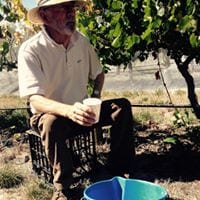 Traditionally grapes have always been picked by hand. It is obviously the gentlest way to handle grapes at harvest time, allowing for the removal of whole bunches – leaving the berries attached to the stalks. This can be important depending on the variety and style of wine the wine-maker is hoping to produce.
Traditionally grapes have always been picked by hand. It is obviously the gentlest way to handle grapes at harvest time, allowing for the removal of whole bunches – leaving the berries attached to the stalks. This can be important depending on the variety and style of wine the wine-maker is hoping to produce.
Hand-picking has it’s downsides though… it obviously takes a long time. The timing of harvest is a crucial aspect of wine-making. Anything that delays the fruit coming off the vine (even by just a day or so), such as weather, availability of workers etc. can affect the quality of the resulting wine. It also costs a lot more than using machinery. Estimates suggest 2-3 times more.
Mechanical harvesting
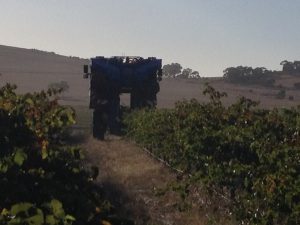 Mechanical harvesters work by moving along the row and shaking the vines. This movement causes the berries to fall off their stalks.
Mechanical harvesters work by moving along the row and shaking the vines. This movement causes the berries to fall off their stalks.
There are several benefits to using machine harvesting over hand-picking. Firstly, and most obviously, it allows grapes to be picked at a fraction of the cost and time. This can be really important when the grapes have reached their desired ripeness and need to be removed quickly.
Secondly, these machines can pick through the night when temperatures are cooler. As we know, oxidation can occur at higher temperatures, so picking at night is often a better option if daytime temperatures are high. Ideally, grapes should be picked at an ambient temperature of between 8 and 16 degrees Celcius.
Loving our blog? Sign up for weekly updates straight to your inbox…
So why pick by hand at all?
There are a few situations for which mechanical harvesters cannot be used…
Some vineyards are simply inaccessible to heavy equipment. Steep slopes can make mechanical harvesting impossible.
In other cases, the winemaking technique dictates the use of whole bunches. For example:
- in the production of premium sparkling wine where whole bunch pressing is used to extract the juice
- when red wines are made using carbonic maceration
Carbonic maceration is a winemaking technique in which whole grapes are fermented in a carbon dioxide rich environment prior to crushing. The result are wines that are fruity in aroma and flavours. They lack tannins, and deep color.
 where there is a need to select only certain bunches or parts of bunches due to the presence of disease or during a season (like 2019!) where frosts and other adverse weather events have caused uneven ripening of berries (known as “hen and chicken”)
where there is a need to select only certain bunches or parts of bunches due to the presence of disease or during a season (like 2019!) where frosts and other adverse weather events have caused uneven ripening of berries (known as “hen and chicken”)
Hen and Chicken is a potential viticultural hazard problem in which grape bunches contain berries that differ greatly in size and, most importantly, maturity. Its most common cause is cold, rainy or otherwise bad weather during the flowering stage of the vines (see image)
So which method does Rob use?
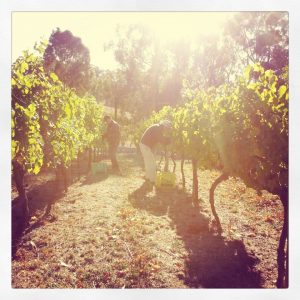 Rob always hand picks his Pinot Noir for Sparkling and Rose along with his Sauvignon Blanc.
Rob always hand picks his Pinot Noir for Sparkling and Rose along with his Sauvignon Blanc.
The main principle is to finish up with fine, delicate, low colour juice. The tannins also need to be low. Since colour, tannins and compounds leading to a bigger bodied juice/wine are in the skins, it makes sense to keep berries/skins intact until the bunches get to the press. Machine harvesting always causes rupture of skins and release of juice, no matter how well it’s done.
For red wines and bigger bodied whites such as Chardonnay, this extra extraction is not a problem, so all the varieties for dry red (Shiraz, Tempranillo and Pinot) are machine harvested. It’s also beneficial for Chardonnay to be machine picked as it helps to give more body, and the slight extra tannin is easily absorbed with the barrel ageing.
What does all this have to do with me?
(I hear you ask)
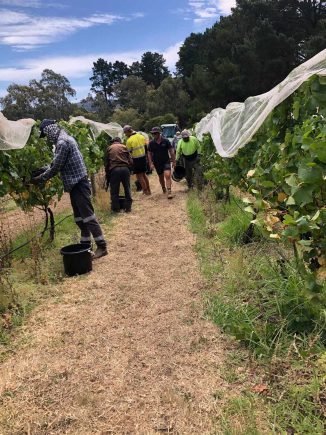 As I mentioned earlier, Rob will be picking the tempranillo for LDR this weekend and he’s inviting YOU to get involved!
As I mentioned earlier, Rob will be picking the tempranillo for LDR this weekend and he’s inviting YOU to get involved!
That’s right! You could be standing shoulder to shoulder with Rob as he (and you) carefully hand selects the grapes which will become Somerled’s 2024 LDR (Light Dry Red).
We’ll be picking first thing Sunday morning (8am) until late lunchtime.
So, if you’d like some hands-on experience, a chance to ask Rob all your wine-making questions and bragging rights when you pour some 2024 LDR for your friends, send me a message and I’ll be in touch with all the details.
Remember though… hand-picking is hard work. It’s not as easy or romantic as it seems. But it is rewarding. And you will be rewarded! With refreshments, wine and something to add to your resume!
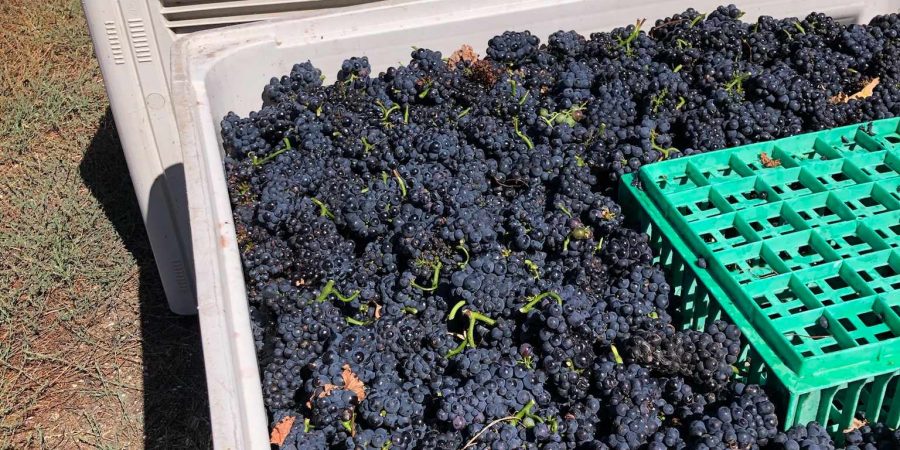
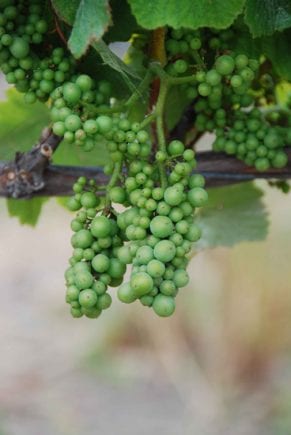 where there is a need to select only certain bunches or parts of bunches due to the presence of disease or during a season (like 2019!) where frosts and other adverse weather events have caused uneven ripening of berries (known as “hen and chicken”)
where there is a need to select only certain bunches or parts of bunches due to the presence of disease or during a season (like 2019!) where frosts and other adverse weather events have caused uneven ripening of berries (known as “hen and chicken”)